by Admin | Sep 4, 2014 | Languages
There are a lot of good reasons to spend time teaching your children how to speak Russian. It is a language that is spoken by roughly 300 million people worldwide, making it the most commonly spoken Slavic language in the world. Russia is also one of the ten strongest economies in the world. It is continuing to grow at a rapid rate, so if your children can learn the language, they will have increased job and business opportunities when they enter the job market. If you happen to have a child who is dreaming of becoming an astronaut, you might be interested to learn that to graduate from NASA’s Astronaut Candidate Program you need to be fluent in Russian as well as English.
Russia also has an incredible history, rich in culture and traditions, so it is a wonderful opportunity for children to learn about a new country or discover their family history and culture.
Russian is considered a moderately hard language to learn, so luckily, it’s not the most challenging language around, although it isn’t one of the simplest either. It won’t be easy, but with a lot of perseverance and practice, your children will be opening themselves up to a world of opportunity.

Where to Start
The Alphabet
An excellent place to start is with the alphabet, the Russian alphabet is known as the Cyrillic alphabet or Cyrillic script. It is easier to learn than the English alphabet because the letters only have one letter to one sound, while the English alphabet can have more than one sound.
Digital Dialects has an excellent section on their site that goes over the alphabet with sound files to help children with their pronunciation. It is a free site with language learning games in Russian (as well as 60 other languages). The Cyrillic script might be a little intimidating for a small child, so you will need to be patient with your child as they begin to learn.
Simple Words
Once your child is familiar with the alphabet, you can begin to introduce essential words like colors, animals, family, things you find around the house. A couple of books that are very helpful with introducing basic terms are Usborne’s First Thousand Words In Russian: With Internet-Linked Pronunciation Guide and a series from Milet Publishing called My First Bilingual Book that has terrific picture books with images for common Russian words that will help get kids started.
Repetition
As with all language learning, repetition is essential. Depending on their age and ability, your child will probably not remember words that you teach them on the first try. Hence, it is crucial to use repetition until they can recognize an item or words. This will take time and patience. Different types of word games (either online or a game that you play with your child at home) can be useful at this stage. Here are a few free online games that you can try out to help reinforce repletion of simple words:
- Raskraska24 is a fun site with activities for kids.
- Enchanted Learning is an educational website that has games to help learn.
- Russian Flashcards offer a free account or a premium subscription where you can learn from home with their Flashcard System.
Phrases and Conversation
As your child begins to build up their vocabulary, you can start to teach them phrases. It is also a good idea to introduce reading the language at this point. Start with simple phrases, and once mastered, you can move onto more complex phrasing.
If you know anyone who speaks Russian, try to have your child interact with them, this will help absorb the language much more quickly.
Your kids must be hearing the language regularly. One of the best ways for a child to learn a new language is for him to listen to people speaking it fluently. Through conversation, children can begin to get used to the sounds and accents of a language. If you don’t speak the language yourself or have someone in your community or family who they can converse with, you can always expose them to the language through music and DVD or online videos.
Here are a few very popular DVDs that can help parents expose their children to the language.
- The always reliable Little Pim DVD’s are an excellent place to start for children ages 0-5 or check out their digital downloads.
- For slightly older kids, you can try Russian for Kids. This is a 5 DVD set that also includes flashcards and a poster.
- Another DVD you can have a look at is Bilingual Baby, although we hesitate to recommend this DVD because the reviews for it are a bit mixed.
Games and Fun
The best results when teaching a child often come when you can make the subject matter fun, and your kids are motivated and excited to learn. Obviously, this isn’t always the easiest thing to do, but if you can manage to make it an enjoyable experience for your child, they will want to learn and will stick with it. If you need a bit of help trying to make the learning process fun for your child, you can always try out a few different apps. Here are a few popular apps for kids:
- Learn Russian. Basics is an app that teaches kids the basics and fundamentals of the language. This app contains interactive lessons for the alphabet, numbers, seasons, weekdays, months, animals, and colors.
- Russian Baby FlashCards is a flashcard app with categories for food, animals, transportation, numbers, colors & shapes, clothing, household items, body parts, outdoor items, music instruments/arts & learning.
- My First Bilingual App, this iPad app features 26 mini-games all with a feature word. You can try the first ten words for free and then use the in-app purchase to unlock the complete version. This app can best be described as a fully interactive, bilingual board book.
- Smart Speller Russian HD Full Version helps kids learn to spell by hearing the sound each letter makes, and the proper pronunciation of the words.
- 123 Count With Me in Russian! was developed for kids (ages 2+) and aimed at teaching them to count by having the child move graphics of toys and shape puzzles.
Remember that teaching a new language to a child is a process and will take a long time, so don’t expect immediate results. The more you can expose your child to the language, the easier it will be for them to learn.
photo credit: smcgee via photopincc
by Admin | Sep 1, 2014 | Life Skills
For much of my daughter’s life, it has never occurred to her that she isn’t able to do things that boys can do, or that boys shouldn’t do things that girls do. As with a lot of parents, we made a conscious effort to avoid buying her gender-specific toys, books, and clothes from a very young age. Of course, there are times that she gravitates towards more traditional items that are marketed towards girls, and that is fine because she also loves lots of things that are marketed towards boys as well. Lately, she has become much more conscious of gender stereotyping, and my heart swells when she notices sexism and points it out with disgust.
While I’m always looking for strong female role models for my daughter, I sometimes forget that it is equally important to seek out material for my son that shows men and women, or boys and girls, as equals who don’t need to be limited by behaviors and activities. The heart of feminism (to me anyway) is tolerance, equality, and treating everyone with respect, and what better place to start than with children.
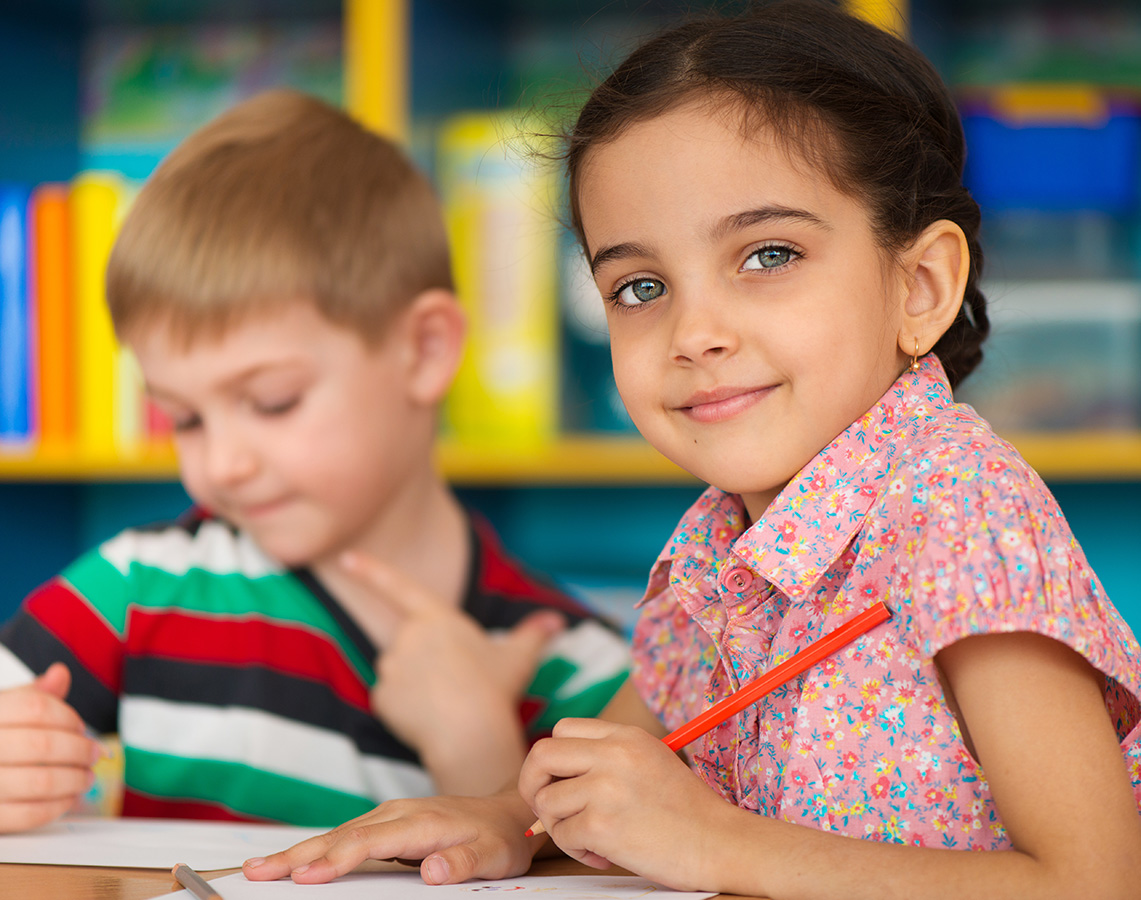
Talk about female role models with your kids. It is easy to get depressed about the lack of attention that is given to fascinating and accomplished women. These days there are so many great women role models around for young boys and girls, not only current figures but a long list of historical figures that you can introduce your children to. When you hear about inspiring women and girls, talk to your children about them; let them see what women are capable of doing. Here is a small sample of some of my favorite current female role models for kids.
- Malala Yousafzai is an incredible young woman who your kids should know about. Malala is a girl’s education activist, and her story is hugely inspiring for anyone. After being shot in the head by the Taliban at age 14 and surviving, she continues to fight for the right for girl’s access to education. She recently won the Nobel Peace Prize; if you want to learn more about her story, her biography is a great read.
- Emma Watson not only plays a feminist role model for girls as Hermione Granger in the Harry Potter series, she recently gave a fantastic speech at the UN on ending gender inequality that your kids should watch.
- If you have a daughter (or son) who loves engineering and space, you should know about Natalie Panek. She is a rocket scientist, explorer, and advocate for women in technology. I heard her speak at We Day Toronto 2014, and she would make a great role model for anyone interested in pursuing a career in space exploration.
You can find lists all over the web of top women politicians, entrepreneurs, artists, activists, scientists, writers, inventors, etc. If your child has a particular area of interest, find women in that field and talk to your kids about their achievements just as you would famous male figures.
Read books to boys and girls with strong female characters. When you are choosing books for your very young children to read, be careful with the types of books you are selecting. Books are a large part of how children learn how to figure out the world, especially when they are very small. Choose a wide variety of books; avoid books that stick with gender stereotypes and embrace books with strong female characters. Look for stories with characters who take on all types of behavior and activities regardless of gender.
In my experience, most modern books are (for the most part) very gender-neutral (or maybe I just gravitate towards books that don’t follow the gender roles). There is a big market for empowered girl’s books, especially in the last few years. Here are a few popular ones to check out:
Challenge kids when they repeat stereotypical ideas about gender norms. Even if you are the most careful parent when it comes to trying not to define gender roles to your kids, they will still pick up on what society believes is a woman’s role or a man’s role, it’s impossible to avoid. Children at school will heavily influence your kids, the media, family, and friends, so when you notice your child is limiting the types of roles that either sex can be through discussion or play talk, challenge the idea of what is accepted.
Discuss the sexualized image of women. It’s pretty hard to avoid sexualized images of women, all you need to do is turn on your TV, computer, open a magazine, watch a music video or even just walking down the street you will see billboards with hyper-sexualized images. Your kids are seeing what you are seeing, and even if your first instinct is to ignore it or not draw attention to it, it’s much better to discuss your thoughts about what you are seeing with your child. It helps them to process what the image is showing and sort out their ideas. The sexualization of women (and men to a lesser degree) is a part of the culture that we live in, and it is essential to keep an open dialogue with your kids and give them tools to interpret what they are looking at.
Show kids that there is room for both females and males to be equally smart. This sounds like a weird thing to say, but there are studies showing that as girls get older, they feel the need to ‘play dumb’ to please boys. According to the author of one study, “Girls feel they must downplay their abilities, pretending to be less intelligent than they are, not speaking out against harassment, and withdrawing from hobbies, sports, and activities that might seem ‘unfeminine’.”
This is a huge issue to overcome, but start by reinforcing the idea that being smart is cool for both genders. Boys need to be taught that they don’t need to feel threatened by intelligent females, and girls need to have examples of smart women who aren’t afraid to show their intelligence. Amy Poehler has a great website and web series called Smart Girls that offers music, advice, info about other cultures, and lots of other exciting things.
Think about gender stereotypes when you are buying toys. Try to resist toys that are traditional toys for a particular gender. Sometimes the lure of princesses or pink is too much for some kids, but it’s not something parents necessarily need to encourage. Living in a house with a boy and a girl, we have a wide variety of toys to choose from, and when left to their own devices, kids don’t care if the toy is for a girl or a boy, it’s either a good toy or a crappy toy. It is the toy marketers who are pushing the stereotypes onto kids. If you are curious about what message you are sending to your kids through their toys, check out the Pink Stinks and Let Toys Be Toys campaigns.
Think about the messages you are sending to boys. If there is ever going to be true equality, everyone has to be involved, it’s great to empower girls, but boys also need to be shown different ways to express their masculinity and that it is okay for them to let everyone be equal. This is just as important as empowering girls. If boys are shown that it is okay to have feelings, be emotional, and loving, they will be able to form happy and healthy relationships with women. There is still a long way to go before women all over the world overcome the current wage-gap, access to education, and abuses against women issues that plague society.
Model feminist behavior. Kids are always watching what their parents are doing. They watch how you interact with people, and they see how you treat yourself. They pay attention to your work and what you do in the house. Children also listen to your ideas and take them on as their own. So you need to show your children through your example what it means not to be limited by your gender.
I think there are lots of wonderful and smart feminists girls and boys who want everyone to be treated equally and who don’t feel limited by pressures from society. These are the future leader who will truly make the world a much more humane place to live, and it is essential for parents to recognize this and encourage a society that treats everyone equally.
by Admin | May 30, 2013 | Life Skills
Teaching kids about manners isn’t the most fun thing that you will encounter as a parent. No one likes to nag, but it’s worth putting in some effort to teaching manners because if your kids have good manners, adults will be nicer to them, and they will know how to speak and be respectful to others. You can send them off into the world, knowing that they will know how to behave in different social situations. So in the interest of making the world a friendlier, happier place, we have rounded up lots of good books, apps, videos, and cards that will help you teach your kids the manners they need to know.
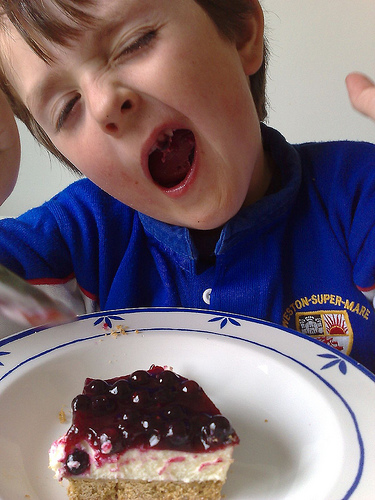
Manners Cards for Kids
An easy way to get children familiar with what is polite and not polite would be to try out a few manners cards:
- Happy Mini Manners Card Set has 42 good manners mini card with helpful phrases/reminders & matching peek-a-play characters that say things like knock on the door, do not tease, say excuse me, love your family, listen to others, etc.
- Good Manners FlashCards is a set of 15 cards that remind kids to love your family, wash your hands, be kind, say thank you, etc.
- Golly Gee-pers is a fun and easy table manners game to help encourage good manners.
Manners DVDs for Kids
- Mind Your Manners (ages 5-12) teaches kids the benefit of good manners. Using adults to serve as the “bad examples,” the lessons provide kids with the proper etiquette they need to be successful in life in a variety of circumstances, from dining at the table to cleaning up after themselves.
- What Every Kid Should Know About Manners and Etiquette is a 60 minute, three-part video program where kids teach kids using humor, songs, funny costumes, and situations in which kids often find themselves. This video teaches children how to treat others with respect and shows them that the world is a much nicer place when we follow the simple rules of manners and etiquette.
- The Etiquette Factory has a 12-week program that includes a DVD that is designed for homeschool, pre-school, or any elementary classroom setting.
The Best Books to Teach Kids Manners
There are A LOT of manners books aimed at kids, so we decided to research all the reviews, comments, and recommendations on what books are the best manners books for kids. Since there are so many books to choose from, we are listing our top ten books.
- What Do You Say, Dear? It is a whimsical guide to manners that uses absurd situations and funny illustrations to help teach kids everyday social behavior.
- Cookies: Bite-Size Life Lessons is a kind of dictionary that defines mysteries such as “fair” and “unfair” and what it means to “cooperate by using examples having to do with cookies.
- Manners Can Be Fun by Munro Leaf has stick figure drawings and a brief text that tells why good manners are essential and how to have good manners at home, at play, and on visits.
- How to Behave and Why also by Munro Leaf talks about the four main things (be honest, fair, strong, and wise) that you have to do if you want to make good friends and keep them.
- Dude, That’s Rude! has cartoons and kid-friendly text that teaches the basics of polite behavior in all kinds of situations—at home, at school, in the bathroom, on the phone, at the mall, and more. Our eight-year-old kid tester was laughing out loud while reading this book.
- Excuse Me! Teaches toddlers the ABC’s of “polite behavior” in a gentle and funny way.
- socialsklz(Social Skills) for Success: How to Give Children the Skills They Need to Thrive in the Modern World is a new book that we recently came across that is great for kids who are growing up in a digital age.
- Whoopi’s Big Book of Manners for K-Grade 3 reminds kids of common polite phrases to use, such as please and thank you. It also talks about circumstances children will recognize: interrupting, forgetting to clean up after yourself, and not saying you’re sorry. The author outlines good manners for different situations: table, movies, and theater, sports, elevator, etc.
- Everyday Graces: Child’s Book Of Good Manners uses stories and poems under headings like “Honor Your Mother and Father,” “Please and Thank You,” “No Hurtful Words,” “Good Behavior in Sport,” and “Showing Respect for Country”.
- How Rude!: The Teenagers’ Guide to Good Manners, Proper Behavior, and Not Grossing People Out teaches teens how to be a good host and guest, what to do (and not do) when going online or waiting in line, how to deal with rude relatives, how to act at the mall and the concert hall, how to make introductions, who invented manners, and much more. Hundreds of “Dear Alex” questions and answers cover everything from dating to breaking up, thank-you notes to table manners, ethnic jokes to social cliques, skateboarding to celebrating.
Books to Help Teach Kids Table Manners
Table manners are an incredibly difficult skill to develop, so here are some of the best table manner books for kids:
- The Berenstain Bears Forget Their Manners this book is mostly is about good manners in general, but there is quite a lot about table manners in the story. It’s a fun and easy way to get your kids thinking about manners.
- You’ve Got Manners!: Table Tips from A to Z for Kids of All Ages (You’ve Got Manners series) This guide to proper behavior at the dinner table provides an introduction to etiquette for kids and a refresher in manners for adults. Offering three tips for each letter of the alphabet, kids are asked to examine the factors that contribute to proper form.
- Emily Post’s Table Manners for Kids goes in-depth about table manners answering questions like which fork do I use? How do you use chopsticks? Is it okay to answer my cell phone during dinner? What is the polite way to eat spaghetti? Pretty much everything you need to know to get you through any meal is here—from table settings to eating tricky foods, to holding up your end of a dinner conversation.
- How Do Dinosaurs Eat Their Food? (Book & CD) just like kids, dinosaurs have a difficult time learning to behave at the table. However, with a little help from Mom and Dad, these young dinosaurs eat all before them with smiles and goodwill.
- Tiffany’s Table Manners for Teenagers Written by Walter Hoving, former chairman of Tiffany’s of New York, it is a step-by-step introduction to all the basics, from the moment the meal begins (“It is customary for the young man to help the young lady on his right to be seated”) to the time it ends (“Remember that a dinner party is not a funeral, nor has your hostess invited you because she thinks you are in dire need of food. You’re there to be entertaining”). In addition to the essentials about silverware, service, and sociability, it includes many of the fine points, too—the correct way to hold a fish fork, how to eat an artichoke properly, and, best of all, how to be a gracious dining companion.
- Soup Should Be Seen, Not Heard! A Complete Manners Book for Kids teaches kids how to politely handle introductions, telephones and cell phones, dining, partying, writing notes, e-messaging, dressing, and more, all in a lighthearted tone that appeals to both boys and girls four-years-old and up.
Best Apps to Help Teach Kids Manners
There aren’t many apps to teach kids manners, but here are a few that we found that look good:
- A Quest for Good Manners is an interactive storybook that teaches kids the secret to good manners is kindness and consideration.
- Maddie & Matt’s A to Z’s of Good Manners & Values is an interactive storybook showing Maddie and Matt exhibiting good manners and values.
- Good Manners for ages 3-7 is a mini book where kids watch characters at dinner, the playground, and the classroom as they learn sharing, kindness, and respect.
photo credit: Podknox via photopin cc
by Admin | Mar 4, 2013 | Life Skills
One of the big ideas to come along lately in child development circles is that if parents want their children to be successful, then they need to start teaching their kids resilience. The argument is that we have been so focused on trying to make sure our children avoid pain and disappoint at all costs, that children are so insulated from unpleasant situations or challenges they are incapable of dealing with any sort of failure or adversity.

The idea of developing resilience in kids started to gain some traction after the publication of the groundbreaking book NurtureShock: New Thinking About Children that explored the problems with the self-esteem movement and the helicopter style of parenting.
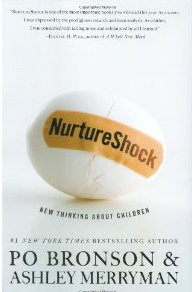
More recently, the huge success of Paul Tough’s How Children Succeed: Grit, Curiosity, and the Hidden Power of Character put the idea of resilience back in the spotlight. Tough argues that character attributes such as perseverance and resilience are a better predictor of future success than standardized tests, and that character is created by encountering and overcoming failure. So our job as parents shouldn’t be trying to protect our kids from making mistakes, but instead letting children fail because it helps to develop resilience.
 Since developing resilience in kids does seem like a pretty good idea, we thought, why not jump on the bandwagon and find out where you can get more of the best practical advice on how to build resilience in kids.
Since developing resilience in kids does seem like a pretty good idea, we thought, why not jump on the bandwagon and find out where you can get more of the best practical advice on how to build resilience in kids.
After going through lots of books on resilience and reading way too many reviews, our top resources for learning how to create resilience in your kids are:
- Dr. Kenneth Ginsburg is an expert on how to build resilience in children. Dr. Ginsburg has a wonderful site called Fostering Resilience that has all sorts of great advice, including his 7 C’s building blocks to resilience. The 7 C concept (competence, confidence, connection, character, contribution, coping, and control) is also explored more in-depth in his book Building Resilience in Children and Teens: Giving Kids Roots and Wings. This is a great (almost 400 page!) book with a lot of practical advice about how to teach kids to make wise decisions, how to recognize and build on their natural strengths, how to deal with stress, and so much more practical advice that will help develop resilience. We highly recommend this book.
- Another of our favorite resources is Dr. Wendy Mogel. Dr. Mogel is a clinical psychologist and author of the bestselling books, The Blessing Of A Skinned Knee: Using Jewish Teachings to Raise Self-Reliant Children and The Blessing of a B Minus: Using Jewish Teachings to Raise Resilient Teenagers. You don’t have to be Jewish to benefit from her books. The Blessing of a Skinned Knee is a wonderful, funny book that gives advice about how parents can get back to the basics of being authority figures in children’s lives, instead of grown-up “friends”. It also talks about how to teach kids that what you do is more important than what you think or believe, why it’s essential to do a thing in moderation, kids and adults are not equal, how to celebrate or embrace our child’s faults, and lots more stuff. The Blessing of a B Minus is an excellent book for parents of teenagers that shows parents how all the terrible or frustrating parts of being an adolescent can be viewed as blessings and why they are important for psychological growth and character development. This book has a lot of tools and advice that parents can utilize.
- Finally, our last choice for the best resource is Raising Resilient Children: Fostering Strength, Hope, and Optimism in Your Child. This is a great book that lists ten essential behaviors or guideposts to try to incorporate into your life to help teach your kids resilience. The guideposts are:
-
- Teach and convey empathy
- Listen, learn, and influence to communicate effectively.
- To change your words of parenting, rewrite your negative scripts.
- Find ways to love your children that help them feel special and appreciated.
- Accept your children for who they are and help them set realistic expectations and goals.
- Nurture islands of competence; every child must experience success.
- Mistakes are teachable moments.
- Help your child develop responsibility, compassion, and social conscience.
- Teach and emphasize the importance of solving problems and making choices and decisions.
- Discipline in ways that promote self-discipline and self-worth
You can check out the book or the author’s website to find out more about these ten behaviors and how to work them into your life.
by Admin | Jun 20, 2012 | Education
Teaching kids to read can be so rewarding, and yet so incredibly frustrating at the same time. It might seem that everyone else’s children are reading earlier or are finding it much easier than your kids. If that is the case, you are probably looking for a bit of extra help. If you are then great news because we have the secrets to teaching kids to read that other parents might not be telling you about. There are some amazing products available that you need to be aware of that will get your kids reading successfully in no time.
Since the ‘Phonics’ marketplace is pretty swamped, we have put together a little guide to help get you started with the best free websites, the best system, DVDs, books and apps that we could find that can help kids learn to read in a fun and hopefully stress-free way.
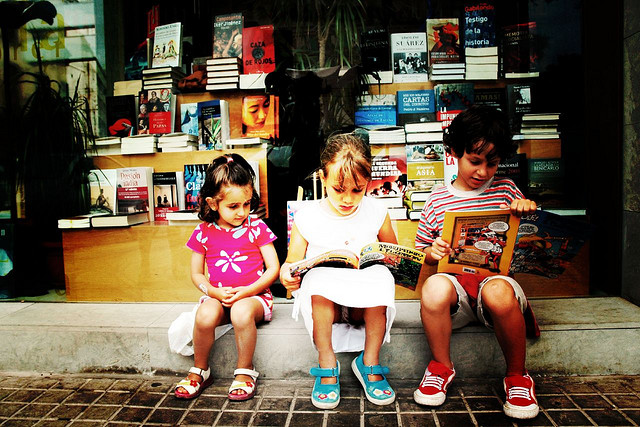
Best Videos for Teaching Kids Phonics
If you are looking for a DVD that will help your kids learn their phonics sounds LeapFrog: Letter Factory is a great video to check out. It won’t teach it won’t teach your kids to read, but it will give them a great start by teaching them their phonics sounds.
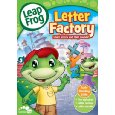 If you have younger kids, getting this DVD is a perfect place to start. It basically teaches children the phonic sounds of the alphabet in an entertaining, easy, and fun way. You and your kids will be singing the songs, and your kids will learn precisely what sound each letter makes. It is an excellent foundation for pre-reading since it is a fantastic teaching tool disguised as entertainment, and your kids will love it.
If you have younger kids, getting this DVD is a perfect place to start. It basically teaches children the phonic sounds of the alphabet in an entertaining, easy, and fun way. You and your kids will be singing the songs, and your kids will learn precisely what sound each letter makes. It is an excellent foundation for pre-reading since it is a fantastic teaching tool disguised as entertainment, and your kids will love it.
The Best Book to use to Teach your Kids to Read using Phonics
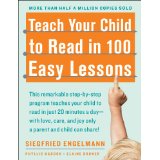 Teach Your Child to Read in 100 Easy Lessons is the book to get if you want to get your kids reading. This book is amazing if you can find 20 minutes a day for 100 days and are willing to put it the time and get the lessons done – it really does work. A bit of a warning though, there is a good chance your kids will not want to do the lessons because they aren’t bundled up in a cute package with super kid-friendly illustrations. You will have to be creative in getting them to do the lessons, but if they do the scripted lessons when they are finished, they will be reading at a second-grade level (second grade!).
Teach Your Child to Read in 100 Easy Lessons is the book to get if you want to get your kids reading. This book is amazing if you can find 20 minutes a day for 100 days and are willing to put it the time and get the lessons done – it really does work. A bit of a warning though, there is a good chance your kids will not want to do the lessons because they aren’t bundled up in a cute package with super kid-friendly illustrations. You will have to be creative in getting them to do the lessons, but if they do the scripted lessons when they are finished, they will be reading at a second-grade level (second grade!).
If your kids are starting to recognize phonics sounds and you want to get them some storybooks to practice with, you should look for books that are known as ‘phonics readers.’ The British book company Usborne have a really good set, but they don’t seem to be easy to find in the U.S, you can look for some like Starfall’s Learn to Read series.
Best Online Phonics Program (Free)
There are a few free phonics websites around; we checked out ABC Fast Phonics, Progressive Phonics, and Starfall. The site we liked the best that offer free phonics resources was Starfall.
 Some of the paid sites (ClickNKIDS.com, Time4Learning.com) have free lessons that you can find on the sites, but we are just reviewing the entirely free sites in this section. Starfall is a free website that teaches children to read with phonics by using phonics games and online interactive books. Kids can learn pre-reading skills that help them gain the skills to eventually read short online books. With this site, kids can practice letter sounds, word recognition, and reading comprehension by going through the site’s excellent online books, songs, and games. The site reads the books back to the child, and it offers lots of resources for parents and teachers. They also have a paid version for home or school.
Some of the paid sites (ClickNKIDS.com, Time4Learning.com) have free lessons that you can find on the sites, but we are just reviewing the entirely free sites in this section. Starfall is a free website that teaches children to read with phonics by using phonics games and online interactive books. Kids can learn pre-reading skills that help them gain the skills to eventually read short online books. With this site, kids can practice letter sounds, word recognition, and reading comprehension by going through the site’s excellent online books, songs, and games. The site reads the books back to the child, and it offers lots of resources for parents and teachers. They also have a paid version for home or school.
Best Phonics Program (not free)
The two Phonics Systems that we narrowed our search down to were ClickN KIDS and Hooked on Phonics. Ultimately we choose ClickN KIDS, mostly because of the cost.
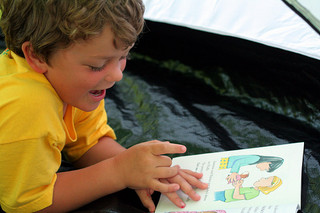
The Best Phonics Toys and Reading Systems
Two of the most prominent players in ‘the learn’ to read educational toys space are Leapfrog and V-Tech. Both companies have lots of different toys or systems that you can choose from that are, for the most part, pretty reasonably priced. If your child is just starting and is still learning the phonics sounds, a toy that you should consider is the LeapFrog Fridge Phonics Magnetic Alphabet Set. You really can’t go wrong with this super popular toy, it’s cheap, it really does teach kids their sounds, and it is a significant first step to learning to read.
If your kids know their sounds and you are looking for something a little more complex to help get them reading, you might want to consider the super popular LeapFrog LeapReader Reading and Writing System. People love this system, but the only drawback is that you have to keep buying books for it.
photo credit: cuellar via photopin cc
photo credit: John-Morgan via photopin cc










